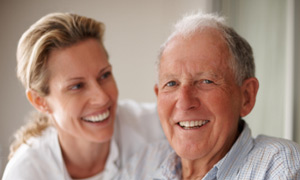
THE ROLE OF MASSAGE IN HEALTH CARE
28 Feb2011
Posted by -
Massage care is supportive, not curative, for those who are ill or injured as it effectively supports various forms of medical intervention (including mental health) as well as the body’s innate ability to heal.
Some diseases and injuries are cured with medical intervention. This is especially true of acute care situations, the area in which the science and practice of medicine shine. However, most people are not cured with health care interventions (e.g. medication, surgery). Instead, the patient’s condition is simply managed, a situation that puts a major strain on the health care delivery system.
Most health conditions are managed and therefore require long-term care. Therefore treatment is often expensive. Massage offers benefits for the management of many chronic health conditions in a potentially cost-effective manner.
 The doctor and highly trained support staff are best suited to handle acute situations. This is an important distinction in the health care environment. Massage therapists work most effectively with patients who have chronic conditions and those facing death, because there is no cure in these cases.
The doctor and highly trained support staff are best suited to handle acute situations. This is an important distinction in the health care environment. Massage therapists work most effectively with patients who have chronic conditions and those facing death, because there is no cure in these cases.
We must also remember the contraindications to medical treatment for conditions that cannot be cured. This is where the Patient-Doctor relationship is important as patients must be given the opportunity to look at the possible side effects of medications to make sure the drug’s purpose outweighs any possible side effects. Unfortunately, in many cases, the treatment can be worse than the disease.
The difficult health problems are the ones that medical science does not know how to fix. We also have the continual rise of extreme health problems due to certain lifestyle choices, which require the person to change behaviours (e.g. nutrition, exercise, diet modification).
Some health benefits of massage have been validated by research and others are based on clinical experience and/or are historically supported by the experience of many cultures over centuries of practice.
The main focuses of massage in the health care environment are as follows:
- Breathing effectiveness
- Circulation support
- Comfort and pleasure
- Oedema and fluid imbalance management
- Pain management
- Support for sleep and reduction of fatigue
- Soft tissue normalisation
These outcomes can overlap. For example, improved breathing could support sleep, and increase pain tolerance. Reducing oedema could increase circulation to an area. Pain management allows for effective movement, and soft tissue normalisation.
The health care world is as dynamic as the human body. Demands on the system eventually change the structure. This is one reason for the greater role massage is playing as part of the health care delivery system.
